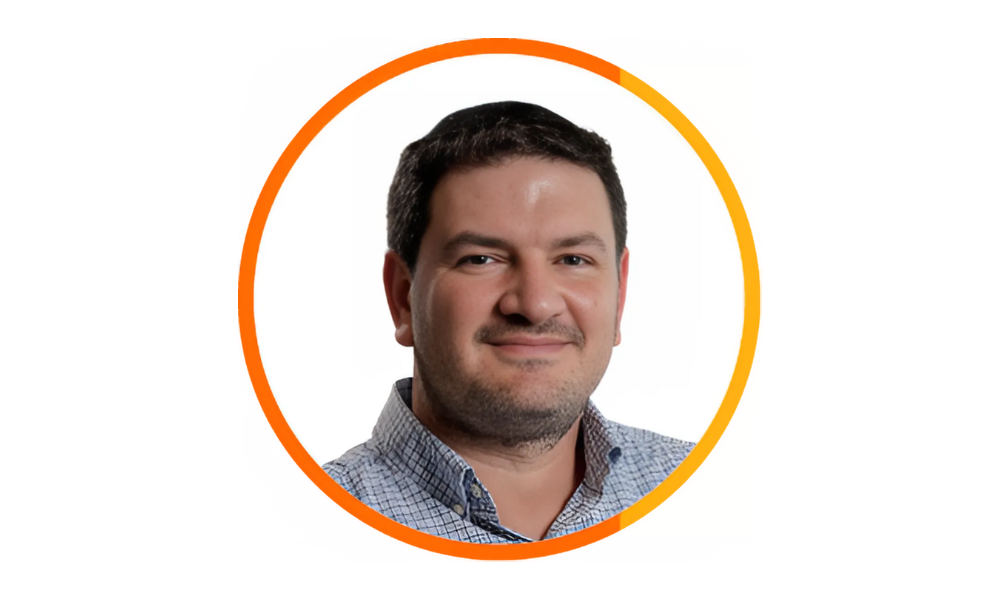Join the Quantum Revolution and plan for your real future
Key Takeaways:
- In a rapidly changing world, leaders must adopt a mindset that prioritizes adaptability and moves beyond traditional planning and execution methods.
- The current “Quantum Revolution” requires recognizing that change is inherent to our reality, fostering an environment where unlearning and relearning are essential.
- Instead of focusing solely on where we want to be, we need to ask ourselves where our clients and the market require us to go. This will allow us to set adaptive goals that respond to real-time needs.
- Organizations must move from being data-driven to being data-receptive, leveraging insights from various sources to navigate unpredictability and capitalize on new opportunities.
The world is changing fast. As entrepreneurs we must change along with it. To do that, requires an adaptive leader mindset. Think about it. We started with physical intelligence and hard work. Then, the Industrial Revolution shifted everything, and we all became specialists in something. Then came the “Purpose Revolution” and the emphasis shifted again to emotional intelligence.
Today, we are in the midst of the “Quantum Revolution,” which emphasizes awareness and adaptability. It’s about embracing the idea that change is constant, requiring us to unlearn old ways and relearn new ones. As Alvin Toffler famously said, “Change is not merely necessary to life – it is life.” This means we can’t cling to rigid goals. Instead, we must shift from fixed, optimistic objectives to flexible, adaptive ones, using our core vision as a guiding compass.
We must understand who we are, what we stand for, and what makes us unique. We must now ask, “What is emerging from different market and client needs, and how can I adapt to leverage that and grow with that?”
Rethinking Strategy for Today’s World
The adaptive leader mindset requires that we adjust our long-term planning. In the past, Jim Collins proposed 30-year plans. Gino Wickman and EOS said 10 years. Nowadays, Quarterly Pulsing® and 2-Day Annual Planning sessions are preferred practice. These help organizations stay aligned with their long-term goals and resolve issues systematically in the modern business environment.
The singularity curve and technological change
Strategic planning involves two key components: long-term and short-term planning. Both are influenced by the concept of technological singularity—a hypothetical future moment when technological growth becomes uncontrollable and irreversible, leading to unpredictable consequences for human civilization.
In the past, significant changes took decades to unfold and were often driven by just five or six major factors, such as the industrial revolution, the invention of electricity, the telephone, the automobile, and the internet. Today, however, change is happening much faster, driven by a range of innovations—such as robotics, medical breakthroughs, genetic engineering, artificial intelligence, and blockchain. These advancements are major forces accelerating the pace of change at an unprecedented rate.
Five Modern Key Adjustments for Long-Term Planning
Linear growth relied on being data-driven. Exponential growth became data-informed. For Quantum growth, we must be data-receptive—constantly aware of everything happening around us to understand the best path forward.
Where do my clients need my business to be? Where does the market need my business to be? What do we need to do to unlearn, to relearn, to move to an adaptive mindset that shifts goals from optimistic to adaptive?
1. Focus on who we are
With linear growth, we think. With exponential growth, we do. But with quantum growth, we are. It’s about core values, core target, and core focus—who we are at our core. In the old world, we evaluated our businesses on hard assets and capital and competed to win.
In today’s business environment, reputation, trust, and other intangible factors are crucial drivers of value. Culture plays a central role, with top talent gravitating towards organizations with strong, positive cultures. Therefore, understanding and clearly defining our identity, values, and what we attract or repel is essential. Modern workers are increasingly seeking more than just financial rewards; many are willing to accept lower salaries to be part of a meaningful and aligned culture.
2. Move from data-driven to data receptive
Being data-receptive means understanding who we are, what we stand for, and what makes us unique. This opens many more future possibilities than linear thinking, which is anchored in past achievements.
We don’t know what’s going to happen. No one knew Google Maps would mark a major shift for my delivery company, but we adapted. Then, apps like Uber and Lyft changed everything again. From full-time drivers, we now had contractors who would work for a ride service in the mornings and for me in the afternoon. These technologies meant we could not predict where we wanted to be – we had to adapt to future possibilities.
3. Shift from optimistic goals to adaptive goals
When we think about optimistic goals, we’re saying, “Okay, so this is where we want to be.” To strengthen the predictive muscle, we need to ask the right questions to solve the adaptive goals. And these are different questions:
- Where do we and my business need to be in a quarter, a year, or three years to still be in business? Before, we would think: Where do we want to be? How much do I want to make? In today’s business environment, we need to ask where do my clients need my business to be? Where does the market need my business to be?
- What do you need to be able to do to be there? And are we that person or team organization today?
- What do we need to do to unlearn, to relearn, to become that?
4. Highlight learnings from results
In a predictive approach, we often aim for predictable outcomes. For example, we want to be 80% confident that our short-term goals are achievable and that our annual and three-year targets are on track. However, to reach these goals, we must spend more time analyzing what went right and what went wrong.
While focusing on a specific path, we should remain open to new technologies that could change our perspective and approach. For instance, AI can now assist in documenting our processes. We need to continuously adapt, learn, and adjust our strategies to succeed based on these evolving insights.
Our goals need to be realistic and measurable. We not only strive to hit them, we strive to learn from them.
5. Promote an adaptive mindset in teams
What does that mean? I’ve seen a lot of companies start building teams where they split off into “today teams” and “tomorrow teams”.
Today teams are typically operations, controls, quality, and finance, and they’re looking at how to maximize operations and efficiencies.
But then we also have others—the tomorrow teams—that are looking at long-term shifts, strategies, market shifts, niches we can pursue, and trends that are happening. We come together on the planning day, and they bring their thoughts. Then, the today teams can choose and pick which can be effectively implemented today so we can move forward for the future. A lot of my teams are using this, and it’s a great tool for adapting while focusing on efficiency at the same time.
Change is constant, and we must stay with it
The landscape of business is evolving at an unprecedented pace, so we have to make a profound transformation in our leadership approach. The journey from physical and emotional intelligence to a quantum mindset signifies a paradigm shift where adaptability is essential. As we embrace this change, we must prioritize understanding our core values and identity—who we are at our essence—while remaining receptive to the vast array of data that influences our decisions.
Our focus must shift from static, optimistic goals to dynamic, adaptive objectives that respond to the changing needs of our clients and the market. This involves fostering a culture of continuous learning, where insights from our experiences guide us toward an innovative future. Creating teams that balance immediate operational efficiency with long-term strategic foresight empowers our organizations to thrive amidst uncertainty.
The call to action is clear: as adaptive leaders, we must lean into this quantum revolution with curiosity and resilience. By nurturing our teams, refining our strategies, and embracing the inevitable changes that lie ahead, we can grow as businesses and vital contributors to a rapidly evolving world. Ultimately, the question is not merely “Where do we want to be?” but rather “How will we adapt and grow together in response to an ever-changing future?” The answers to this question will chart the course for our success in the years to come.


